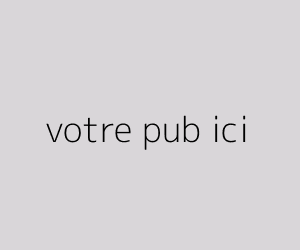- 13:25UN Chief Highlights Morocco's Sahara Initiative for Sahel Economic Integration
- 13:15Kamala Harris Targets Disenchanted Republicans in Key Battleground States Ahead of Election
- 13:00Morocco Bolsters Maritime Influence with IMO Council Vice-Presidency
- 12:45King Charles III's Australian Visit: A Royal Encounter Amidst Growing Republican Sentiments
- 12:25Moroccan Buyers Surge to Second Place in Spanish Property Market
- 12:05Kamala Harris Highlights Trump's Campaign Fatigue in New Attack Ad
- 11:40Stellantis Shifts Gears: Morocco's Automotive Boom Raises Questions for European Manufacturing
- 11:25Elon Musk Increases Financial Incentive for Petition Supporting Constitutional Rights
- 11:15Morocco's Human Rights Council Pushes for Enhanced Protections in Strike Legislation
Follow us on Facebook
Unveiling Gender Disparities: HCP Sheds Light on Stark Inequalities in Morocco's Urban Job Market
On the occasion of International Women's Day, Morocco's High Commission for Planning (HCP) has revealed alarming statistics that illuminate the persistent gender disparities in the nation's urban job market. The report presents a somber depiction, highlighting the significant underrepresentation of women in the workforce and the systemic obstacles they encounter.
According to the HCP's findings, a mere 32.2% of the employed urban population aged 18 to 60 across Morocco are women, while a staggering 67.8% are men. This disparity is further accentuated by a parity index of 2.1, indicating that for every ten employees, only two are female, while the remaining eight are male. The report notes that this gap widens with age, ranging from 1.8 for the 18-29 age group to a concerning 2.4 for those aged 30-44.
The HCP emphasizes that the low representation of women in the workforce stems from their alarmingly low participation rate in the active labor force. This rate has steadily declined, plummeting from 30.4% in 1999 to a mere 21.5% in 2019, underscoring the deeply entrenched gender disparities prevalent in the Moroccan job market.
Furthermore, the report reveals that long-term unemployment, defined as unemployment lasting a year or more, disproportionately affects women. A staggering 76.3% of unemployed women find themselves in this predicament, compared to 63.8% of their male counterparts, highlighting the limited job opportunities available to women.
Educational attainment, often seen as a means of economic empowerment, fails to bridge the gender gap in Morocco's urban job market. The HCP's data shows that a significant 56.7% of employees, both male and female, possess either no formal education or have not completed secondary education. Worryingly, men outnumber women in this category, with a staggering 59.2% of male employees falling into this bracket.
Although young employed women aged 18-29 boast an average of 11 years of education, surpassing their male counterparts who average 9.5 years, this advantage diminishes in terms of professional experience. The report notes that male employees tend to dominate various sectors, with their predominance diminishing only as educational levels rise.
In a sobering conclusion, the HCP acknowledges that gender inequality in employment is a "deeply rooted reality in the labor market." The agency underscores the urgency of addressing the underlying challenges perpetuating these disparities, emphasizing that individual attributes of women largely determine their position in the job market, inevitably contributing to wage gaps between the sexes.
This alarming report follows another HCP study, released just a month ago, which revealed that unemployment in Morocco reached a staggering 13% in 2023, a rate unseen in over two decades. The data cited the disproportionately high joblessness among women as a significant contributing factor to this alarming statistic.
Last year, a separate report by the HCP painted an even bleaker picture, revealing that women accounted for a staggering 73% of Morocco's 15 million active population outside the labor force in 2022. Furthermore, a shocking 80% of the country's female population of working age was found to be excluded from the labor market entirely.
As Morocco commemorates International Women's Day, these eye-opening findings serve as a clarion call for urgent action to dismantle the systemic barriers perpetuating gender inequalities in the nation's urban job market. Addressing these deep-rooted disparities is not merely a matter of social justice but also a crucial step towards unlocking the full economic potential of Morocco's workforce and paving the way for a more prosperous and equitable future for all.



